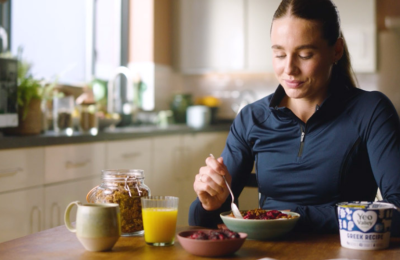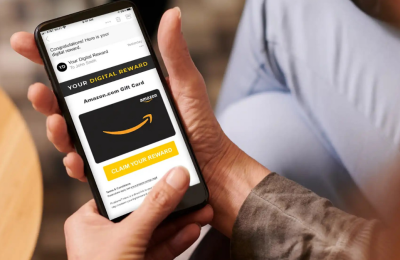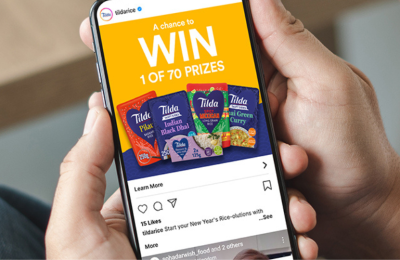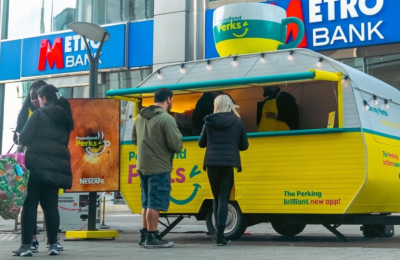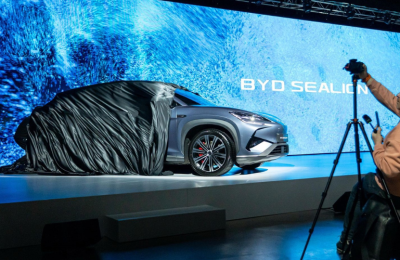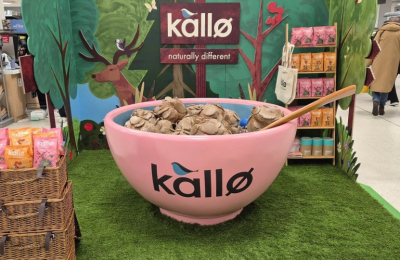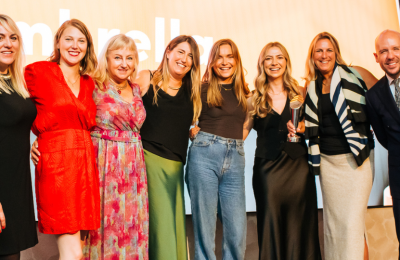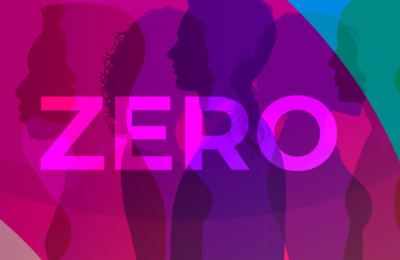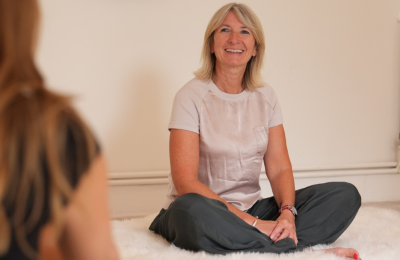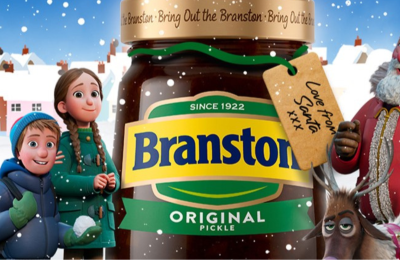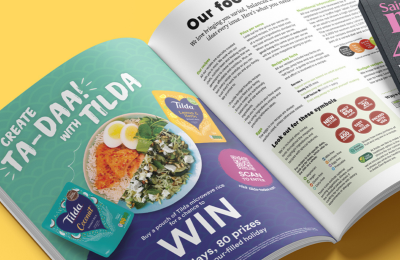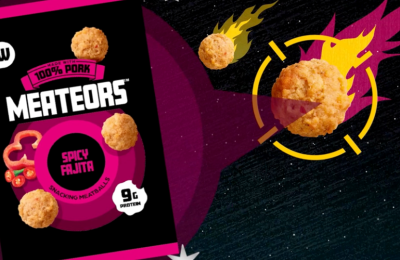Maddie Cullen interviews Jake Xu, owner and Creative Director at Ready, on his view of what grocery retail will look like in the future.
A few weeks back, I stumbled on a Forbes article highlighting Colgate’s purchase of online start-up Hubble. According to its author, this represents a significant turning point in the evolution of the grocery market from in-store to online.
I wanted to delve deeper into this. So I sat down with our digital director Jake Xu to get his thoughts on the subject.
MC: HOW WILL WE BE BUYING OUR GROCERIES IN FIVE YEARS’ TIME?
JX: Probably in much the same way we are now.
Five years’ is also such a short amount of time for any drastic changes to occur. Online shopping has been around for years, but the majority of people still shop for their groceries in-store, and that’s because digital is not yet the answer.
The move to digital usually comes from solving a problem. Technology works as an answer to a question or an issue. We buy things online because it’s easier, cheaper, or gives us something that bricks-and-mortar stores don’t. However, only 6% of UK shoppers buy grocery online which suggests that the online ‘solution’ as it stands isn’t good enough to convert us all.

People like to see and touch before they buy, especially for fresh and chilled produce. Things that have a limited shelf life haven’t quite made the switch to digital and it will be a long while till they can in a truly satisfying way. People don’t feel comfortable buying perishables without testing the quality themselves first.
Cost of postage is another factor. When doing a big weekly shop, the relatively low shipping cost doesn’t matter, but for those that buy less food more often, it’s not a feasible price. But as more businesses provide free shipping, it could become a standard expectation.
However, this isn’t all to say online shopping is a disappointing alternative. On the contrary, there’s a reason this question is even being asked in the first place. People like online shopping because it’s so easy and convenient. Everything a customer could ever want to buy is just at the click of a button.
The internet is primed and ready to sell you whatever you want, it’s just lagging behind for fresh food. Personally, I can’t see this changing in the near future. But eventually, it may do.
MC: WHO WILL BE THE WINNERS AND LOSERS WHEN IT DOES CATCH UP?
JX: The most obvious winner is Amazon. They’re dominating the online shopping industry now and it doesn’t look like they’re slowing down anytime soon. They’re even leading the stride with crucial shopping tech such as voice with Amazon Echo. People can arrive home from work and order a takeaway without having to do anything other than ask Alexa. This will then translate into shopping.
However, ordering an entire weekly shop with voice means people aren’t even looking at the products. For the majority of grocery products, consumers like to see what they’re getting, and others need to actually touch it.
But with Amazon’s acquisition of Whole Foods, it seems like they’re already looking to move into selling grocery items much like they sell DVDs and clothes now. To compete, supermarkets need to adopt a similar attitude. People clearly like shopping in bricks-and-mortar stores still, but the way they do it is likely to change and as soon as one business does it, they’ll all need to follow suit. So those companies that are the first to innovate will definitely rise to the top.
Similarly, grocery brands are in an interesting position. For years they’ve competed and fought for the best spot on the shelves, but now some supermarkets are prioritising their own-brand products, realising the potential for better profit.
Even without added pressure from retailers, visibility is no longer just about where a brand sits on the shelf. Brands can (and should) start the journey to purchase before a customer even walks into the supermarket.
 (Image: Wikipedia)
(Image: Wikipedia)
But at the same time, we can’t forget that Amazon have also opened their own store. It may be a test for now, but I think they’re likely to open more. Maybe their combination of digital tech in an in-store experience is an example for others in the grocery sector.
MC: WHAT ABOUT COLGATE THEN, AND THE MORE NICHE SECTORS LIKE TOOTHPASTE ETC.?
JX: Toothpaste is in an interesting position, like other health and personal care brands. A lot of those sales are shifting online much quicker than food.
They are in the perfect option for subscription services. Many already exist like Totm, an organic tampon and pad brand that delivers items straight to consumers each month, or Dollar Shave Club, which sends all the equipment needed for shaving each month. These services take the hassle out of buying especially for repeat-use items that consumers need but don’t want to think too much about buying.
The opportunity here is for a service that encompasses all these products into one subscription service, rather than consumers having to sign up for so many.
And many people are already signed up to these services or just opt to buy online rather than in-store. These types of products may segment away from grocery, and other retail stores will fight a different battle against digital. Supermarkets could eventually be primarily food distributors, rather than a place for everything under the sun. (Or rather, roof).
MC: HOW WILL THESE SHIFTS IMPACT BEAUTY AND SKINCARE?
JX: Cosmetics and skincare are particularly slipping from the supermarket grip. It’s much more expensive to buy in Tesco over Boots and there is obviously more range in a chemist or online. But people are clearly still buying cosmetics and skincare in stores like Boots and Superdrug. And this is because, if it’s a new purchase, people want to test it out and try it on.
Although there are plenty of tools online to aid this process, consumers are reluctant to trust digital completely. AR mirrors let consumers virtually try on cosmetics, but for most customers they want to try them on in-store once more before buying. And not everything can be tested online. For items like skincare, the only way to get a sense of the product is with a sample.
So let’s look at stores for what they are – a chance to try out the products and feel them. In the future these could become more like showrooms. The focus would be on experience and experimenting with products rather than a hard sell. People could test a new lipstick and then purchase it online to be delivered direct to their door.
Digital is definitely one step in the purchase journey, but there’s always going to be a need for some physical testers. Samples are one way around this, but they take time to ship and aren’t the instantaneous testers that customers can find in a shop.
MY CONCLUSION
According to Jake, the bottom line is that we’re not going to say goodbye to physical grocery retail anytime soon. Tech and especially deliveries need to improve more before more customers opt for exclusively online buying.
We’re starting to see some examples of where the future might be heading though. South Korea is home to Homeplus, the largest e-mart chain. In the subway the store has large virtual billboards where customers can scan the QR codes of pictures of food, pay, and the groceries will be waiting for them once they arrive home.
 (Image: Five Minute Marketing)
(Image: Five Minute Marketing)
This is an example of the ease that consumers will want from digital and also a mix of in-store visuals and online convenience working together. But once again people can’t actually touch the fresh food. They’re seeing a picture which is the same as supermarket websites now. There’s still not a perfect digital alternative to in-store, but this kind of shop suggests a future where online and in-store influence each other to make the ultimate shopping experience.
Supermarkets aren’t going to disappear online in five years’ time, but the way people shop is definitely changing. For non-perishable brands there are a lot of opportunities to be explored with digital.
But for fresh produce there is yet to be a fitting alternative to picking up an avocado and checking its freshness with your own hands.
Maddie Cullen is a Marketing Assistant at Ready, a multi-disciplined creative agency specialising in breakthrough promotional and tactical marketing campaigns. Clients include Soap & Glory, Kiddylicious, Burt’s Bees and Molton Brown.

